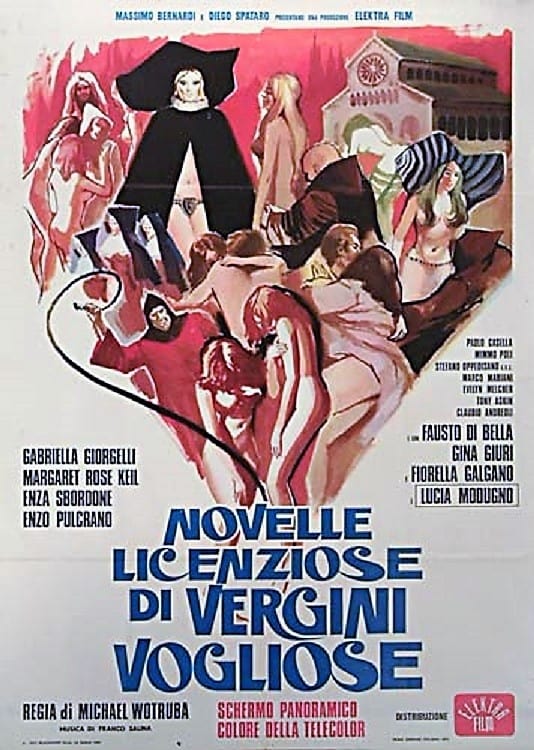The Thousand and One Nights of Boccaccio in Canterbury (1973)
1h 35m
Running Time
July 19, 1973Release Date
The Thousand and One Nights of Boccaccio in Canterbury (1973)
1h 35m
Running Time
July 19, 1973Release Date
Plot.
Boccaccio dreams of making a trip to hell and listening to the licentious tales of the damned: Story 1: Two couples, unknown to each one of them agree for swinging, but each meets one's own spouse. Story 2: A friar takes advantage, with deception, of a young bride obsessed with her insatiable husband. Story 3: A merchant is absent from home by entrusting his wife to her nephew and she initiates him to sexual experiences. Story 4: A husband has a homosexual relationship with one of his workers; the wife threatens the worker and requires too much sex from him and causes to his death. Story 5: A husband entrusts his wife and daughter to a music teacher who is considered inverted and therefore inoffensive: he has relationships with two women separately and together.
Where to Watch.
No streaming offers found
Media.

Details.
Release DateJuly 19, 1973
Original NameNovelle licenziose di vergini vogliose
StatusReleased
Running Time1h 35m
Genres
Wiki.
Italian: Novelle licenziose di vergini vogliose, lit. 'Licentious Tales of Lusty Virgins', is a 1973 Italian decamerotic comedy film lensed and directed for the most part by Joe D'Amato. The story and screenplay were written by D'Amato and producer Diego Spataro.The film is noteworthy for involving Dante Alighieri, Giovanni Boccaccio and Francesco Petrarca - some of the most important people of Italian medieval and renaissance literature - as well as Geoffrey Chaucer in a plot which presents Boccaccio's dream descent into Dante's Inferno as a frame for a number of story vignettes dealing on the sinful lives of the damned he encounters on his way.








